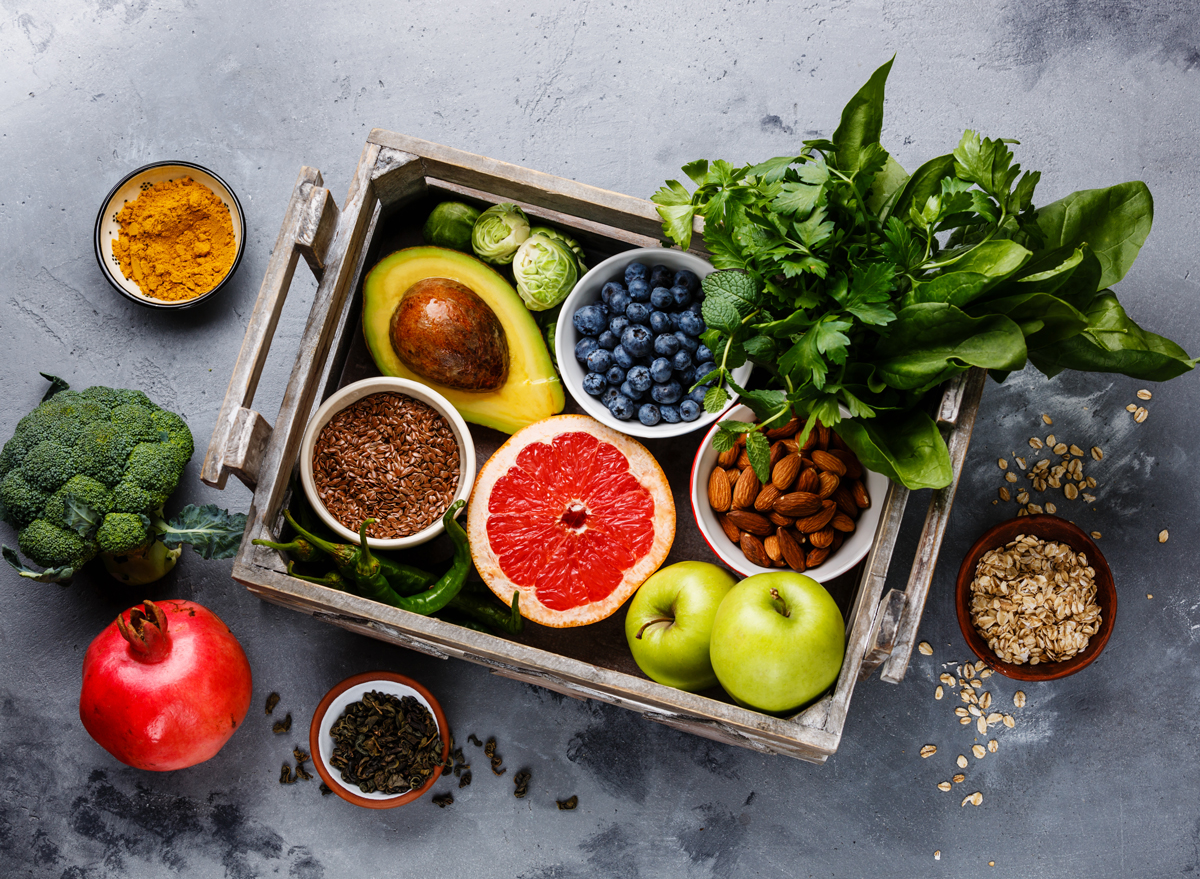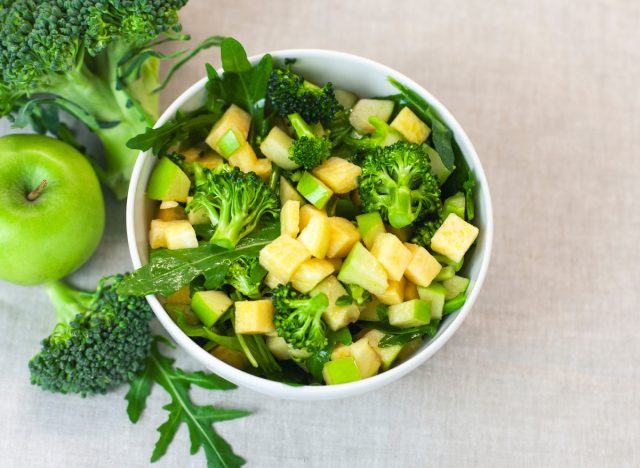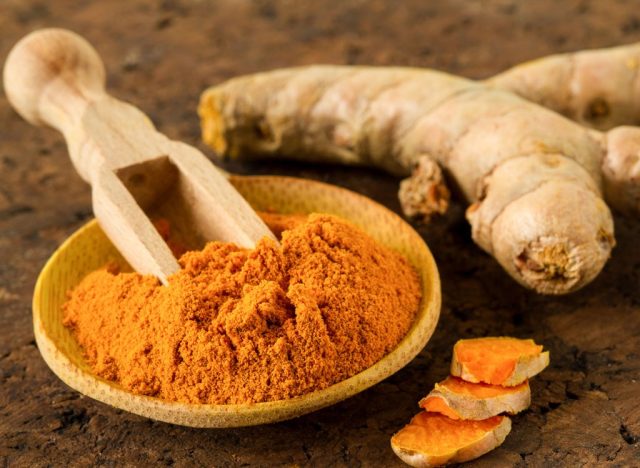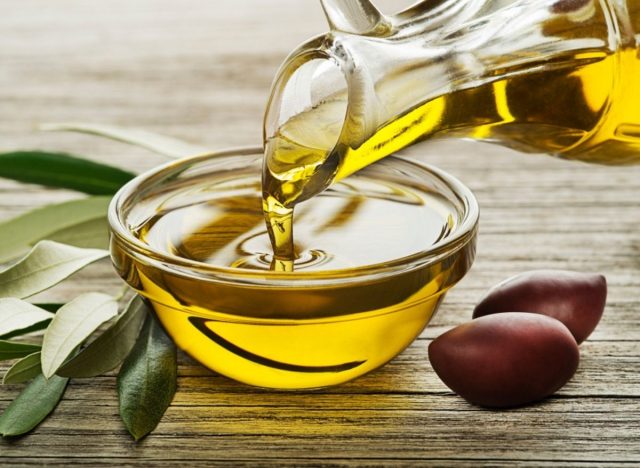The 10 Best Superfoods To Alleviate Joint Pain

Death and taxes, loneliness and self-criticism, opposable thumbs, and a love of ice cream. These are just a few things most humans share. You can add joint pain to the list of commonalities. And if you feel like an anomaly because you happen to be pain-free now, just wait a while.
More than 58 million people in the United States suffer from joint pain—24% of the population, according to the Centers for Disease Control and Prevention. Arthritis is the common denominator. There are different forms of arthritis, but osteoarthritis is the biggie, usually a casualty of increasing age. It causes the most joint pain, by far.
Fortunately, there’s something you can do every day to help alleviate joint pain: eat a healthier diet. “Osteoarthritis (OA) is generally linked to being overweight,” says Eatthis.com medical review board member Julie Upton, MS, RD, a registered dietitian. “Losing weight can help you get your OA under control.”
Osteoarthritis is a degenerative joint disease, characterized by a deterioration of the cushioning cartilage within joints. Being overweight can put added pressure on joints, especially knee and hip joints, often causing bone-on-bone rubbing that triggers aching, pain, swelling, and stiffness.
Another common type of arthritis can trigger debilitating pain, too—rheumatoid arthritis (RA). RA is an autoimmune disorder, meaning your immune system mistakenly releases chemicals to attack the lining of your joints. While different from OA, RA-triggered pain can be relieved through diet, too, specifically by reducing the chronic inflammation caused by that faulty immune response.
“The dietary advice for both osteoarthritis and rheumatoid arthritis is essentially the same balanced, high-fiber, plate-based diet that includes seafood on a regular basis,” says registered dietitian nutritionist Elizabeth Ward, MS, RN, co-author of The Menopause Diet Plan, A Natural Guide to Managing Hormones, Health and Happiness. “Body fat is pro-inflammatory. By eating this way people may find they lose eight while preserving muscle, which supports joints, taking pressure off weight-bearing joints and reducing overall inflammation and joint pain.”
These are the superfoods to eat more of to ease your aches from joint pain. Read on, and to learn more, don’t miss The Most Crucial Eating Habit for Arthritis.
Apples, broccoli, and citrus

For alleviating joint pain, you can’t go wrong by filling your plate with more produce. “Fruits and vegetables are powerhouse foods rich in antioxidants that reduce inflammation in joints and muscles,” says Ward. “They also supply fiber to keep you fuller for longer and help maintain your blood glucose level better than foods rich in simple sugars.” Shoot for at least two cups of fruits and three cups of vegetables per day.
Berries and pomegranates
Among fruits with the highest amounts of bioactive compounds with anti-inflammatory and analgesic effects are blueberries, raspberries, strawberries, and pomegranates. Also, certain fruit polyphenols, including quercetin and citrus flavonoids, have been shown to specifically alleviate symptoms of rheumatoid arthritis, according to the journal Food & Function.
Fatty fish
Eating salmon, sardines, mackerel, canned light tuna, or other fatty fish that are rich in omega-3 fatty acids a few times a week may help reduce rheumatoid arthritis symptoms. Studies show that having a greater ratio of omega-3 fatty acids to omega-6s suppresses inflammation in people with RA. Omega-6s are inflammation-provoking polyunsaturated fatty acids that we typically get too much of from the fried and processed foods and meats found in the standard American diet.
Turmeric

The yellowish-orange spice turmeric typically used in curries and other Southeast Asian foods has been used to remedy joint pain for thousands of years. The active ingredient in the spice is curcumin, a polyphenol with anti-inflammatory properties, that shows the potential for easing the pain of osteoarthritis. A meta-analysis of studies in the Journal of Medicinal Food found that taking about 1,000 milligrams of curcumin a day reduced pain just as well as commercially available analgesic medicines such as ibuprofen, diclofenac, and glucosamine.
Whole grains
One marker of disease in people with RA is C-reactive protein (CRP), which can be detected with a simple blood test, according to Archives of Internal Medicine. Elevated levels indicate inflammation in your body, which exacerbates joint pain. But eating more whole grains, such as 100% whole wheat bread, quinoa, brown rice, and oats, may lower levels of CRP, says the Arthritis Foundation.
Walnuts
A recent study in Advances in Nutrition supports the long-held belief that alpha-linolenic acid (ALA), a plant-derived omega-3 fatty acid, offers cardioprotective and cognitive benefits, just as fish oil does. One of the reasons for this benefit is ALA’s anti-inflammatory effect, which also reduces CRP and inflamed joints in OA and RA patients. One of the best sources of ALA is walnuts.
One study in the American Journal of Clinical Nutrition that analyzed the diets of 5,000 participants in the Nurses’ Health Study and Health Professionals Follow-up Study found that greater nut consumption (including walnuts) was associated with lower amounts of the inflammatory biomarker CRP. Find out why Walnuts Are the #1 Healthiest Nut to Eat While You Age.
Olive oil

“Extra virgin olive oil is one of the best fats to include in your diet because it can help manage cholesterol and provides beneficial antioxidants,” says Upton. The heart-healthy monounsaturated fat also contains a polyphenol compound called oleocanthal that acts like ibuprofen in alleviating pain, according to a study in the International Journal of Molecular Science.
A word about gout
Gout is a special type of arthritis that causes pain, swelling, and tenderness usually in the joint of the big toe. In gout, joint pain is the result of excess uric acid in the blood, which can be the result of the body producing too much uric acid or when it doesn’t get rid of it properly. The body reacts to purines produced by the body or from eating purine-rich foods like beef, chicken, turkey, seafood, and all kinds of alcoholic beverages. “It’s impossible to completely avoid purines so people with gout should work with a registered dietitian nutritionist to tailor a diet that’s right for them,” says Ward.








